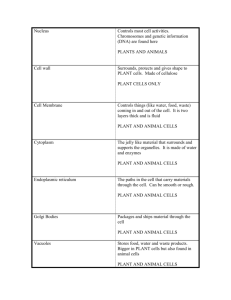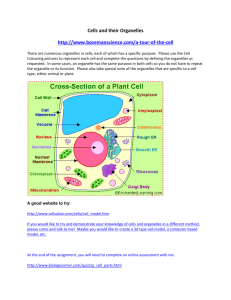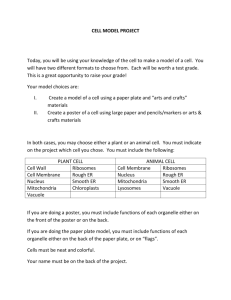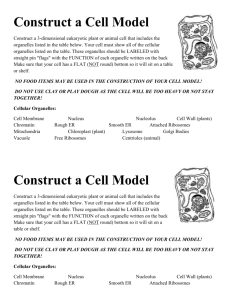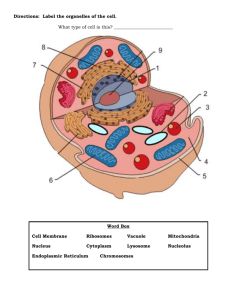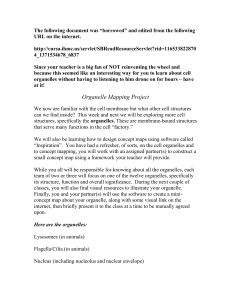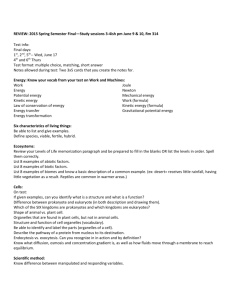website #1
advertisement
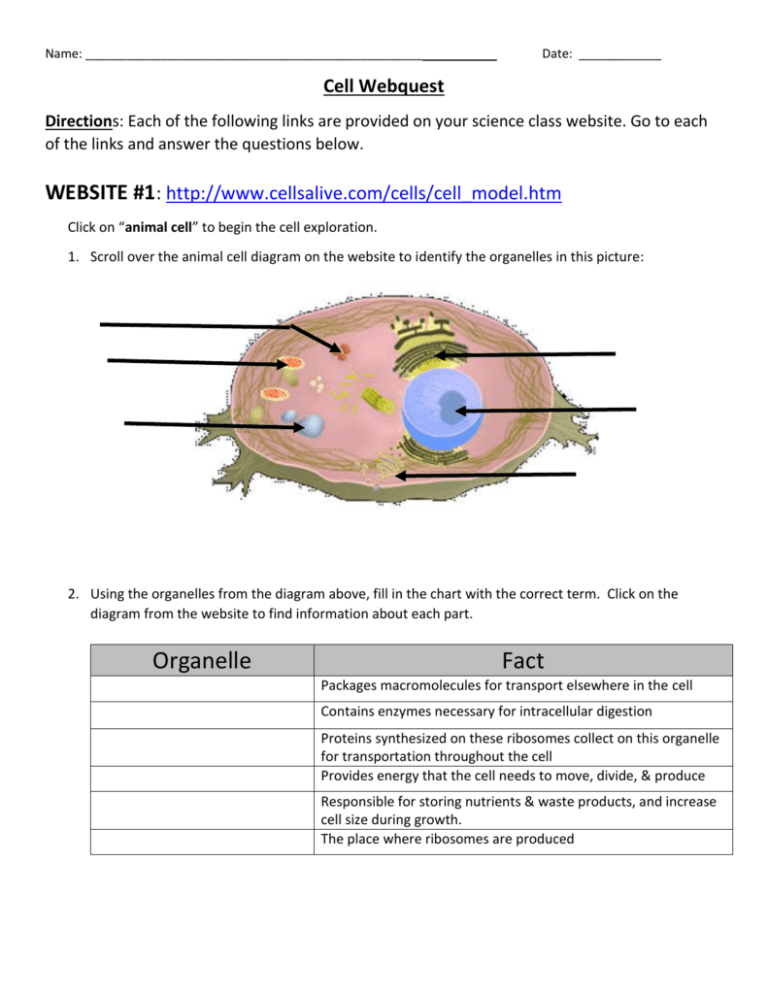
Name: _________________________________________________ Date: ____________ Cell Webquest Directions: Each of the following links are provided on your science class website. Go to each of the links and answer the questions below. WEBSITE #1: http://www.cellsalive.com/cells/cell_model.htm Click on “animal cell” to begin the cell exploration. 1. Scroll over the animal cell diagram on the website to identify the organelles in this picture: 2. Using the organelles from the diagram above, fill in the chart with the correct term. Click on the diagram from the website to find information about each part. Organelle Fact Packages macromolecules for transport elsewhere in the cell Contains enzymes necessary for intracellular digestion Proteins synthesized on these ribosomes collect on this organelle for transportation throughout the cell Provides energy that the cell needs to move, divide, & produce Responsible for storing nutrients & waste products, and increase cell size during growth. The place where ribosomes are produced Click on “plant cell” to begin the cell exploration. 3. Scroll over the animal cell diagram on the website to identify the organelles in this picture: 4. Using the organelles from the diagram above, fill in the chart with the correct term. Click on the diagram from the website to find information about each part. Organelle Fact Provides and maintains the shapes for plant cells and serves as a protective barrier. Continuation of the nuclear membrane without the of ribosomes Contains the DNA which is responsible for providing the cell with its unique characteristics Has pores for controlled entry and exit of things Provides energy that the cell needs to move, divide, & produce Contains chlorophyll which is responsible for making the plant green and gives it the ability to absorb energy from sunlight Website #2: http://www.scsc.k12.in.us/SMS/Teachers/Martin/replacementlink.htm 1. How many cells do humans roughly have? 2. If a cell is cut in half, will it survive? 3. TRUE or FALSE: Some organisms are made up of only one cell. 4. If new cells come from old cells, why doesn’t each new cell only have half of a nucleus? 5. Click on the “Next page”. Within an organism, some cells are not the same. Explain the difference between muscle cells, skin cells, and nerve cells 6. Do all cells contain DNA? WEBSITE #3: http://www.scsc.k12.in.us/SMS/Teachers/Martin/replacelevelsoforganization.htm 1. What does division of labor in a multicellular organism mean? 2. What is the arrangement of specialized parts within a living thing is sometimes referred to as what? 3. Do cells often work alone? Explain 4. Complete the sentence: “The smooth functioning of a complex organism is WEBSITE #4: http://projects.edtech.sandi.net/miramesa/Organelles/animal.html 1. Click on cell membrane and explain how it is like an immune system 2. Click on the nucleus and explain what the DNA code tells your body 3. When little pieces of the Golgi complex break off, what are they called? 4. What are lysosomes often known as? 5. Explain how lysosomes are formed: WEBSITE #5: http://projects.edtech.sandi.net/miramesa/Organelles/plant.html 1. Click on chloroplast and identify the “chemical” process that occurs there 2. Click on cell wall - What are cell walls made of? 3. Describe why the cell wall and vacuole work together 4. Click on cell sap vacuole – How do vacuoles in animal cells form? 5. Why are plant cell vacuoles so big?

